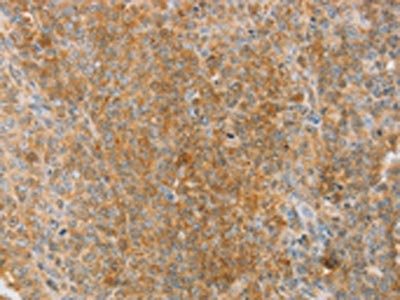
The image on the left is immunohistochemistry of paraffin-embedded Human liver cancer tissue using CSB-PA054075(TRIM25 Antibody) at dilution 1/25, on the right is treated with synthetic peptide. (Original magnification: x200)
TRIM25 Antibody
CSB-PA054075
ApplicationsELISA, ImmunoHistoChemistry
Product group Antibodies
ReactivityHuman
TargetTRIM25
Overview
- SupplierCusabio
- Product NameTRIM25 Antibody
- Delivery Days Customer20
- ApplicationsELISA, ImmunoHistoChemistry
- CertificationResearch Use Only
- ClonalityPolyclonal
- ConjugateUnconjugated
- Gene ID7706
- Target nameTRIM25
- Target descriptiontripartite motif containing 25
- Target synonymsEFP, RNF147, Z147, ZNF147, E3 ubiquitin/ISG15 ligase TRIM25, RING finger protein 147, RING-type E3 ubiquitin transferase TRIM25, estrogen-responsive finger protein, tripartite motif protein TRIM25, tripartite motif-containing protein 25, ubiquitin/ISG15-conjugating enzyme TRIM25, zinc finger protein 147 (estrogen-responsive finger protein), zinc finger protein-147
- HostRabbit
- IsotypeIgG
- Protein IDQ14258
- Protein NameE3 ubiquitin/ISG15 ligase TRIM25
- Scientific DescriptionThe protein encoded by this gene is a member of the tripartite motif (TRIM) family. The TRIM motif includes three zinc-binding domains, a RING, a B-box type 1 and a B-box type 2, and a coiled-coil region. The protein localizes to the cytoplasm. The presence of potential DNA-binding and dimerization-transactivation domains suggests that this protein may act as a transcription factor, similar to several other members of the TRIM family. Expression of the gene is upregulated in response to estrogen, and it is thought to mediate estrogen actions in breast cancer as a primary response gene.
- ReactivityHuman
- Storage Instruction-20°C or -80°C
- UNSPSC41116161





